Dissecting Heels : What’s on the Inside Matters
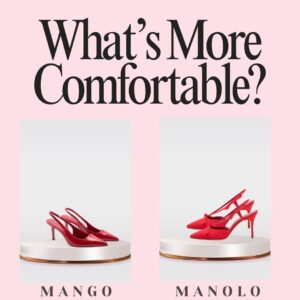
Heels can transform an outfit from ordinary to stunning, but the real magic lies beneath their stylish exteriors. If two pairs of heels look nearly identical but come from different brands like Mango and Manolo Blahnik, which should you choose? (OK, we know the answer seems obvious, but there is more to it!) Understanding the anatomy of high heel shoes and the significance of their materials can be the difference between a pair you wear for 20 minutes and one you comfortably wear all day. This guide will dissect the essential components of high heels—focusing on the upper, insole, and outsole materials—and compare two vastly different brands to help guide your next footwear purchase.
Understanding Heel Materials
1. The Upper
- Comfortable Materials: Suede and leather are top choices for the upper part of the shoe because they are breathable and adapt to the foot’s shape. It’s important to note that there are various types of leather used in shoe manufacturing, each with unique qualities. For instance, lambskin leather is exceptionally soft and flexible, while calf leather offers great durability and a smooth finish. Each type of leather brings different benefits to footwear, catering to various needs and preferences for comfort and style.
- Less Comfortable Materials: Synthetic materials like polyurethane can be stiff and less breathable, depending on the material blend, leading to discomfort and blisters on top of the foot. Though incredibly chic, notice the shiny patent plastic-like narrow toe box on the Mango shoes. These are bound to hurt! On the contrary, you can visually see the soft material used on the Manolo toe box.
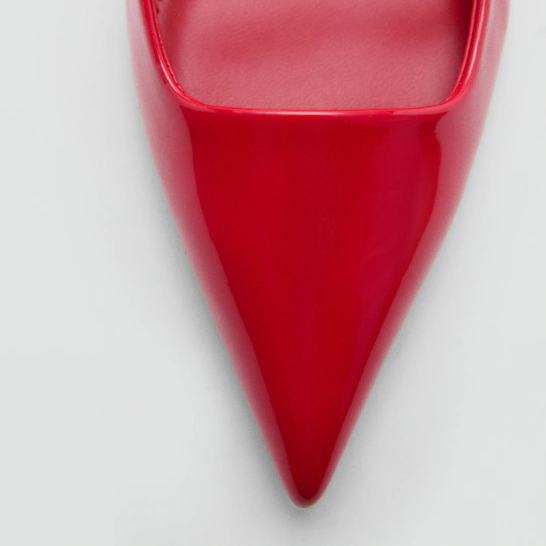
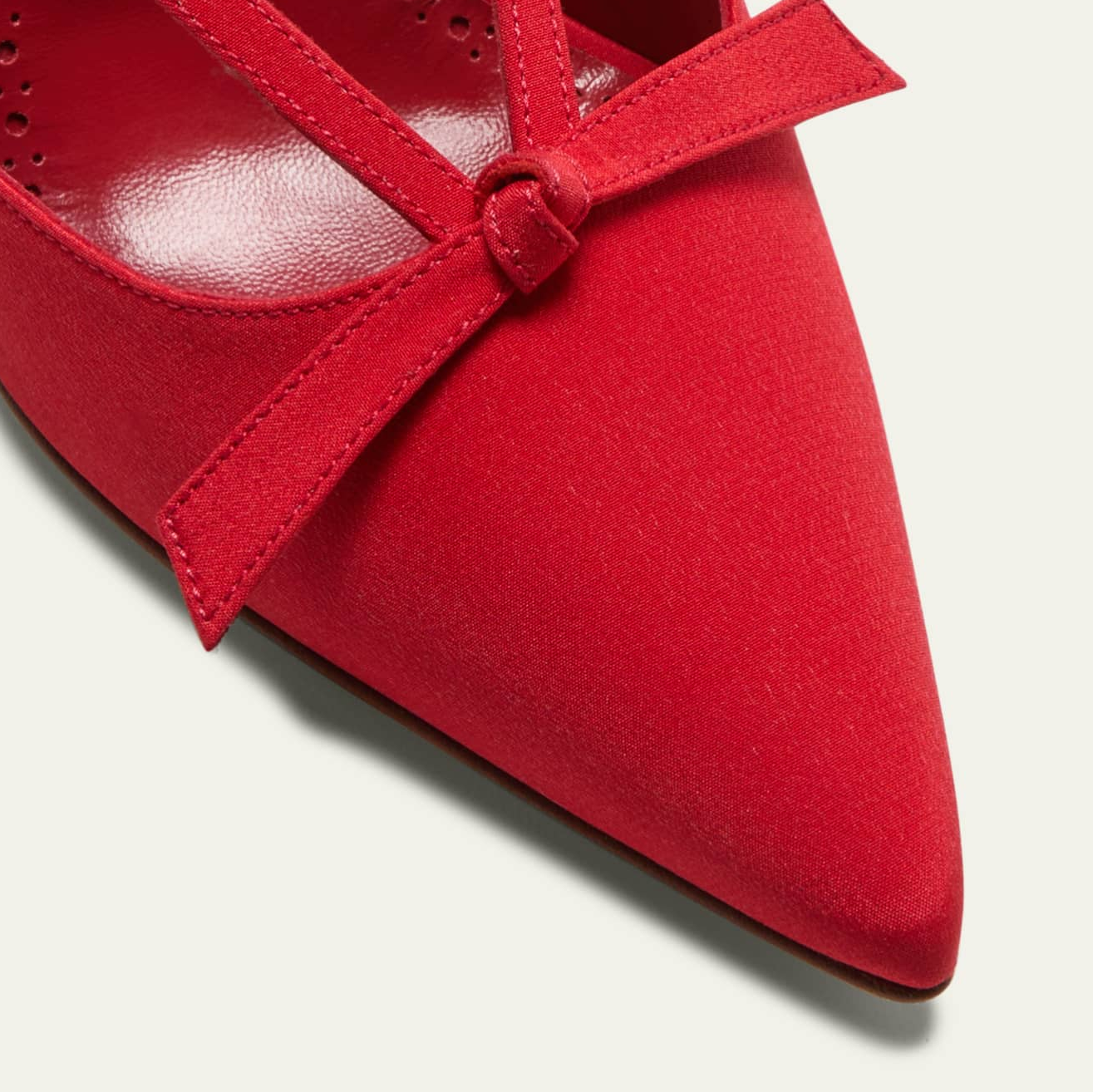
2. The Insole
- Comfortable Materials: A combination of leather and foam provides cushioning and shock absorption, supporting the foot’s arch and reducing strain. Though it might be difficult to tell from the photo below, the soft supple leather grain on the Manolo insole is visible.
- Less Comfortable Materials: Plastic insoles are very hard to the touch, offer very little shock absorption, and contribute to foot fatigue and pain. Once again, it may be hard to tell from an photo, the Mango sole is made of plastic.
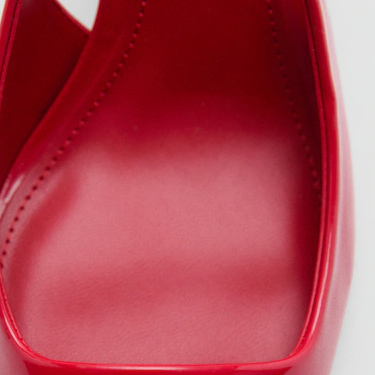
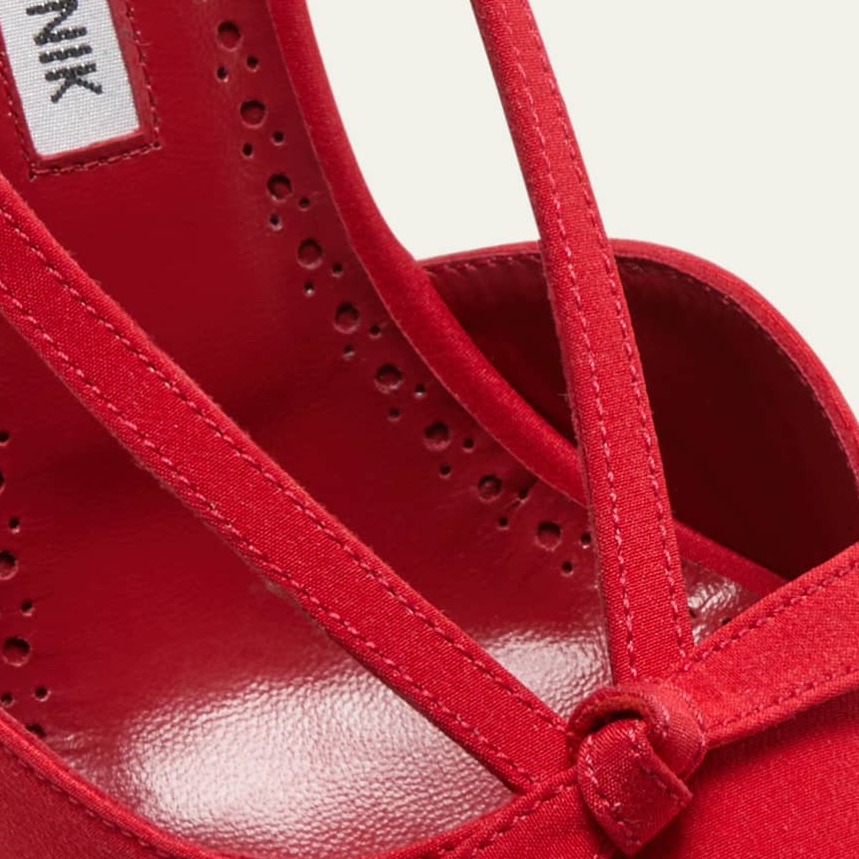
3. The Outsole
- Comfortable Materials: Outsoles made of leather with a rubber grip allow for flexibility and prevent slipping. Notice the Manolo outsoles look soft and have some “give” especially under the footbed.
- Less Comfortable Materials: Conversely, synthetic or shiny outsoles often lack grip, making them slippery and uncomfortable on smooth surfaces. Additionally, overly thin outsoles can lead to foot pain because they provide minimal cushioning and support, placing your feet uncomfortably close to the ground.
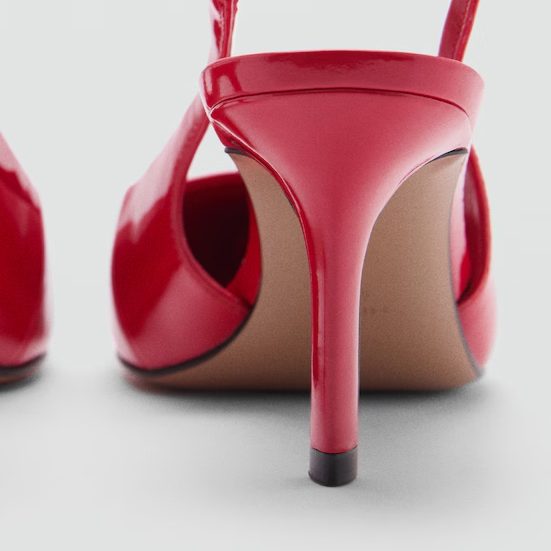
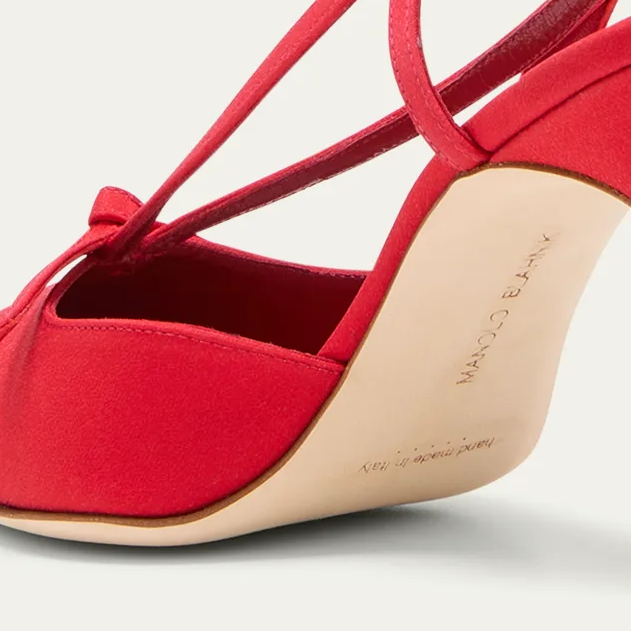
Brand Descriptions
Before purchasing a pair, make sure to read a the Composition Details. Pro-tip: Before purchasing, research the pair of shoes by checking multiple websites to get a comprehensive understanding of what the heels are made of. Additionally, pay close attention to the 1-3 star reviews, as these often provide valuable insights into the comfort and quality of the footwear.
Mango Pump Composition (per website description)
Mango offers shoes with a polyurethane upper and insole and glued outsoles, which are less durable and breathable.
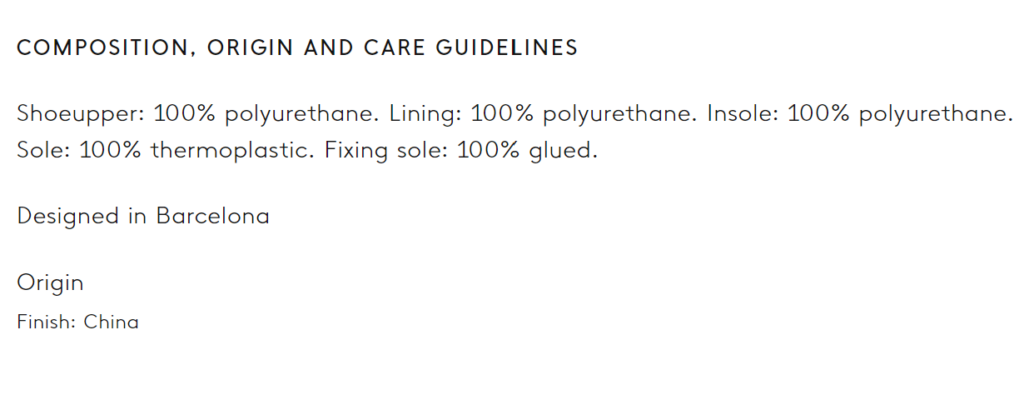
Manolo Pump Composition (per website description)
Manolo features shoes with soft fabric upper, leather insole and outsoles, indicating higher quality and durability.
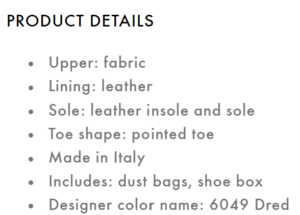
So which would we choose?
This is sort of a trick question!
Though Manolo Blahnik was looking like the winner for its durability and superior quality, we would actually choose neither, especially if luxury branding isn’t a top priority.

Instead, we would purchase mid-tier luxury brands which boast detailed craftsmanship: a wider toe box, extra cushioning, better arch support and an softer block heel. Check out more on these brands in this article.
Mid-Tier Luxury Brands
We highly value brands that offer transparency regarding the materials used in their products. For instance, the Sarah Flint and Inez showcase the construction of their shoes. It not only helps us understand the quality and craftsmanship of the footwear but also builds trust and confidence in the brand.
It’s All in the Details

What’s on the Inside Matters
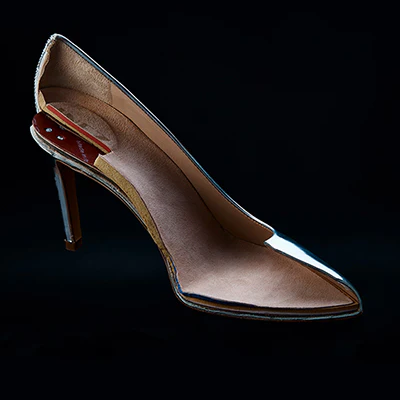
Conclusion
Investing in high-quality footwear is not only about elevating your style but also about choosing shoes that can last through trends and seasons. By understanding the materials and craftsmanship behind each pair, you can make informed decisions that enhance both your comfort and your wardrobe. Choose wisely and let your shoes take you further than just a few steps.
Don’t settle for less—demand transparency and quality in every step. Visit our detailed brand comparisons to see why choosing the right materials matters and how it can transform your experience with footwear. Step into comfort and style today with our trusted guide!

